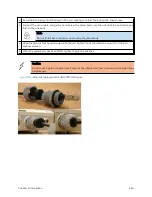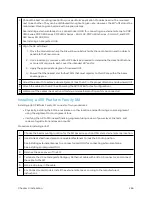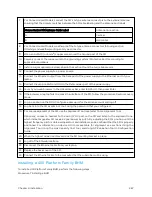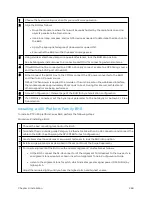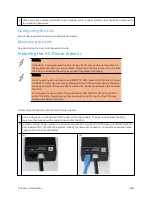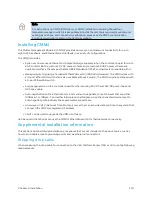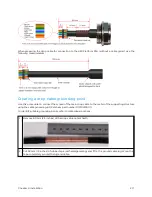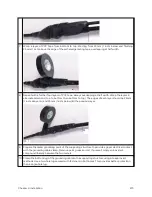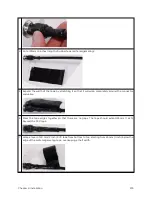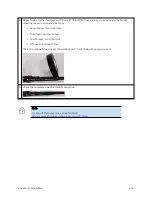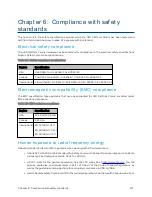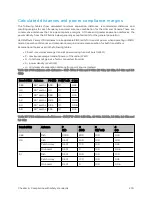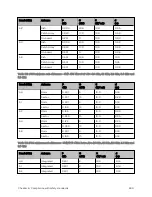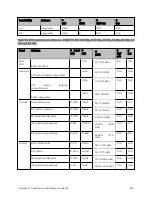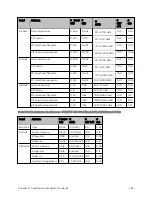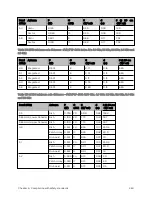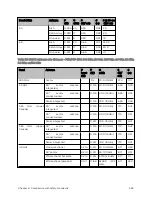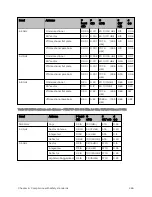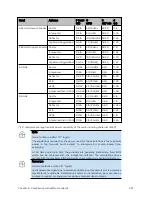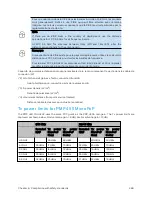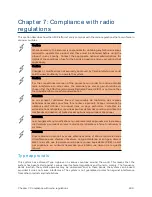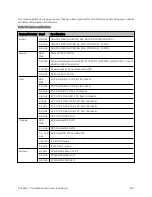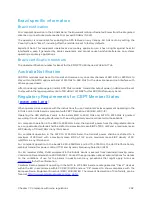
Chapter 6: Compliance with safety standards
278
https://www.canada.ca/en/health-
canada/services/environmental-
workplace-
health/consultations/limits-human-exposure-radiofrequency-electromagnetic-energy-frequency-
range-3-300.html and RSS-102.
o
BS EN 50385:2017 Product standard to demonstrate the compliances of radio base
stations and fixed terminal stations for wireless telecommunication systems with the basic
restrictions or the reference levels related to human exposure to radio frequency
electromagnetic fields (110 MHz – 40 GHz) – general public.
l
ICNIRP (International Commission on Non-Ionizing Radiation Protection) guidelines for the general
public.
See
the
ICNIRP
web
site
at
https://www.icnirp.org/cms/upload/publications/ICNIRPemfgdl.pdf
and Guidelines for Limiting
Exposure to Time-Varying Electric, Magnetic, and Electromagnetic Fields.
Po w er d ensit y exp o sure lim it
Install the radios for the 450 Platform Family of wireless solutions so as to provide and maintain the
minimum separation distances from all persons.
The applicable FCC power density exposure limit for RF energy in the 3, 4.9, 5.4 and 5.8 GHz frequency
bands is 10 W/m
2
and in 900 MHz frequency band is 6 W/m
2
. For more information, see Human exposure
to radio frequency energy on page "Human exposure to radio frequency energy" on the previous page.
The applicable ISEDC power density exposure limit for RF energy in unlicensed bands is 0.02619 * (f^
(0.6834)), where f is the lowest frequency of the supported band. For licensed bands, the power density
exposure limit is 0.6455 * (f^(0.5)), where f is the lowest frequency of the supported band.
Calculat io n o f p o w er d ensit y .
The following calculation is based on the ANSI IEEE C95.1- 1991 method, as that provides a worst- case
analysis. Details of the assessment to EN50383:2002 can be provided, if required.
Peak power density in the far field of a radio frequency point source is calculated as follows:
Where:
Is:
S
power density in W/m
2
P
maximum average transmit power capability of the radio, in W
G
total Tx gain as a factor, converted from dB
d
distance from point source, in m
Rearranging terms to solve for distance yields:
Содержание PMP 450 Series
Страница 92: ...Chapter 2 System hardware 92 Figure 29 MicroPoP Omni antenna implementation pattern Vertical...
Страница 134: ...Chapter 3 System planning 134 Figure 51 Mast or tower installation...
Страница 135: ...Chapter 3 System planning 135 Figure 52 Wall installation...
Страница 136: ...Chapter 3 System planning 136 Figure 53 Roof installation...
Страница 137: ...Chapter 3 System planning 137 Figure 54 GPS receiver wall installation...
Страница 158: ...Chapter 3 System planning 158 Figure 61 cnMedusa Antenna...
Страница 258: ...Chapter 5 Installation 258 Figure 123 Yagi antenna alignment horizontally Figure 124 Yagi antenna alignment upward tilt...

